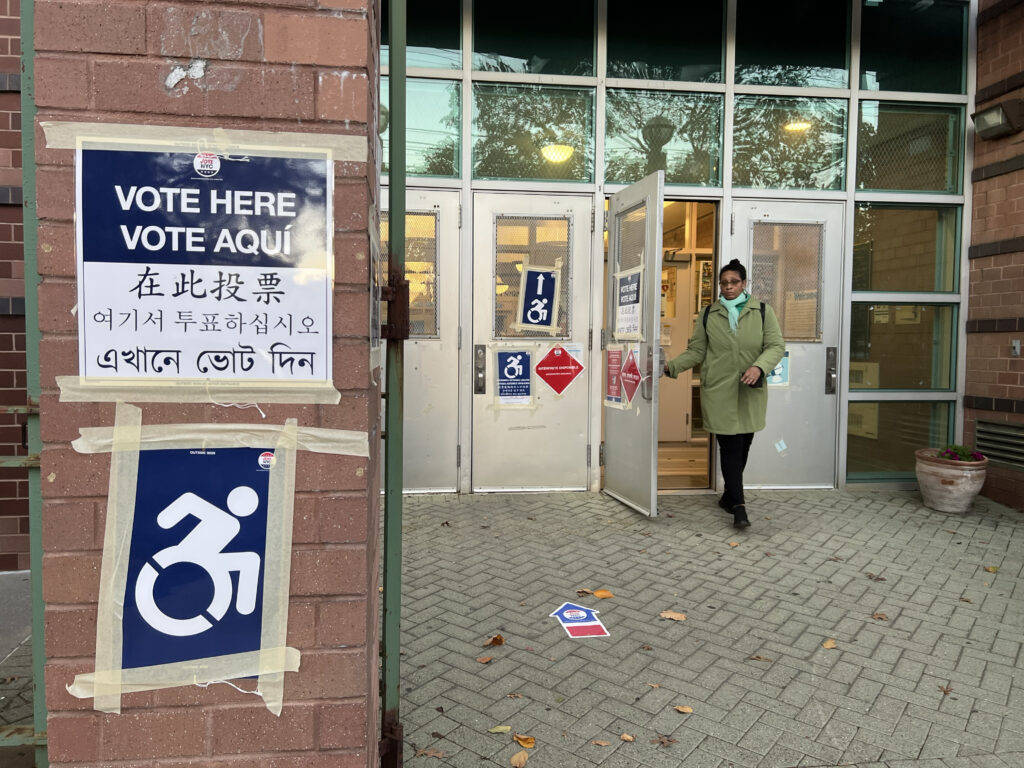By Teesha Baburam and Yasser Saleh

Despite the major societal setbacks brought on by the pandemic, one positive outcome seems to have been the laying bare of long-standing disparities between disabled and able-bodied individuals.
The new systems of voting born out of convenience including early voting, same-day registration, mail-in voting and drop boxes catered to the needs of disabled voters in ways like never before. Given the chance to exercise their rights to democracy with minimal disturbances to their everyday lives, the disabled community seized the opportunity and made their voices heard.
According to the Population Survey and Registration Supplement, voter turnout surged among citizens with disabilities in 2020. The U.S. witnessed a turnout of 17.7 million, an increase from 16 million in 2016, a change largely attributed to mail-in ballots intended to accommodate citizens during the pandemic.
Before the pandemic, disabled folks relied on Access-A-Ride for transportation to get to voting polls—a service that is notoriously unreliable. York college student Habib Olowu, who uses a wheelchair because of spina bifida, explained his frustration with the company. “It’s not flexible but it’s affordable,” said Olowu. “I have to wait 20 minutes or 30 minutes for them. They don’t wait around for 10 minutes for me, I don’t live in Queens so I can’t make emergency appointments.”
In their day-to-day lives, it is a tiresome journey for many disabled folks to travel from one destination to another, so it’s no surprise they do not physically turn out to the voting polls en masse.
Senior Director of Student Wellness and Resources at York College Charmaine Townsell took note of the positive outcome and emphasized the importance of activism within the community. Townsell arrived at York with the intent to restart the CUNY Coalition for Students with Disabilities, or the CCSD—a university-wide student group that represents more than 11 thousand students with disabilities in the CUNY system.
Over the years one of the main goals of the CCSD has been to improve voting, “It is important for any group that you have representation at the ballot box,” Townsell said. “The wonderful thing is that CCSD works in partnership with our disability service directors, who are required to help students with disabilities by encouraging them to register the vote.” She credits the pandemic for introducing a new form of voting in New York City—the Ranked Choice Voting system. “The Board of Elections did not have enough staff to train the entire community on what ranked choice voting was. So we were fortunate that they partnered with the university and asked folks who were interested in learning. So they could share that information with others and CCSD stepped up and said we will do it.”
CUNY students banded together and established online forums explaining what ranked choice voting was and how it worked. The emphasis for the CCSD was on accessibility.
Townsell shares, “In the past, you had to meet certain criteria to mail in your ballot and submit an absolute value. The pandemic leveled the plane field for people with and without disabilities but it was hugely important for disabled folks.” Townsell continued. “Throughout the universities like CCSD and USS University Student Senate, there was a huge emphasis on accessibility at the polls.”
Kevin Korber, the Disability Accommodations Specialist at York College thinks migrating onto digital platforms will open more accessibility doors for disabled individuals that otherwise weren’t there. He predicts that the implementation of electronic voting machines will further encourage this demographic to participate which will in turn garner the attention of politicians.
“We want people to register to vote because there are a lot of issues that impact the disability community as a whole,” Korber said. “ And that needs to be a voting block because it gets politicians to pay attention to issues if there is a block of voters that they can count, as constituents, as reliable people to turn up in November. So the more vocal they are and the more registered they are, the more impact they have at the ballot box, the better the disability policy will become.”
September 12 kicked off National Disability Voter Registration Week. Every year the REV UP campaign is responsible for organizing the National Disability Voter Registration Week (NDVRW) to garner political power on behalf of those with disabilities by sharing resources and urging folks to register to vote.
The efforts of people like Charmaine, Kevin and others within the disability community help students bridge the gap and gain access, especially regarding the ability to vote. Progress was made in regards to disabled people voting with a strong emphasis on community and togetherness. As access for disabled people becomes more widely available their participation will continue to rise. It will not only benefit individuals with disabilities but also people who may otherwise be too constrained to vote on-site.
These subsequent changes help disabled people gain a sense of autonomy and recognize that they have a voice in elections. In the past years, that was not the case because of a lack of resources. However, with the noted increases and participation through mail as technology advances with applications that become integrated into the voting process. Disabled people’s participation in elections will keep increasing as these improvements become more widely available.

